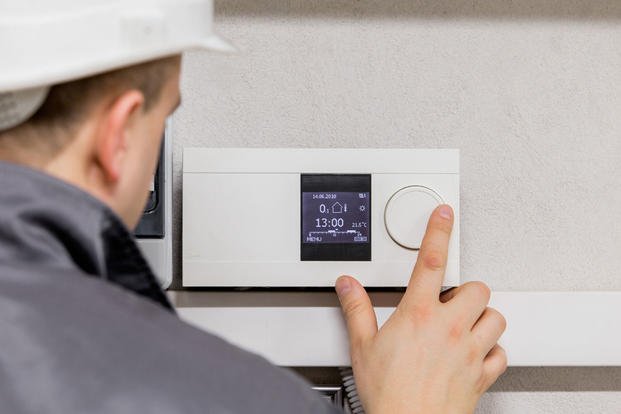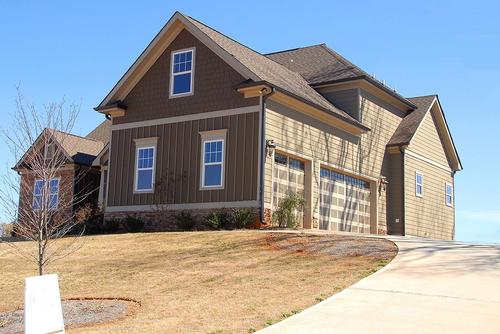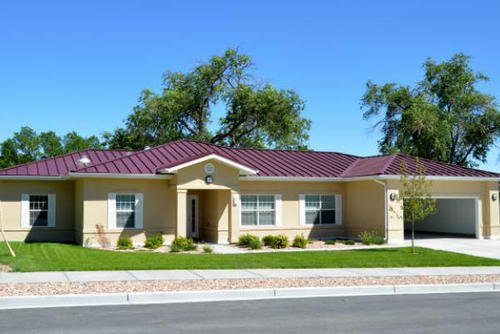Post from MilitaryByOwner
The preparation process to turn your property into a rental home, either temporarily due to a PCS move or as a long-term investment, requires a thoughtful spending strategy to identify the best returns on your rental property home improvements.
Most of the time, updating and improving the property is a wise decision, but only if the changes meet the expectations you have for the rental property. An unexpected landlord's priorities are far different than a military homeowner who maintains multiple rental properties as part of an overall retirement investment strategy. Clearly define your goals for the rental property and devise an update plan accordingly.
Remember, before shopping for high-end engineered wood flooring to entice renters with larger budgets, as the property owner, you are required to protect tenants' health by ensuring the major systems throughout the house are safe and in working order.
1. Mandated Rental Property Upkeep
There's much more to property ownership than installing updated flooring and paint colors. As a landlord, you are lawfully obligated to maintain the upkeep of many aspects of the house. Required housing guidelines are typically created at the local level. Investigate your state, county and city laws to ensure compliance before taking on expensive projects.
These are examples of what is generally expected to maintain the safety standards of the house:
- Remediation of environmental toxins such as mold and lead paint.
- Extermination of rodent infestations.
- Reasonable barriers against crimes, such as a working front door with a substantial lock and landscaping that restricts potential hiding places for criminals.
- Maintenance of structural elements found throughout the home, including floors, stairs, walls and the roof.
- A safe electrical system.
- Working plumbing, heating, ventilation and air conditioning systems.
2. Improvements to Attract the Best Renters
Before crafting a master plan of updates (and potentially spending more money than necessary), take into account your ideal renter persona, rental business budget, and your personal plan addressing if, and when, you will return to the property as a residence.
Renters really do prefer the same quality furnishings and finishes buyers and permanent homeowners are looking for, and they're willing to pay for nicer amenities, especially if they're signing a longer-term contract and have a family to keep comfortable.
On the other hand, many short-term military renters, such as geo-bach tenants, look past outdated paint colors and decor to stick with a smaller budget, knowing they'll live in the house for only a year or so. But they'll appreciate a strong security system or reliable locks and doors to secure belongings while they're at home visiting their family over holidays and long weekends.
As a reminder to all landlords seeking new tenants, Fair Housing Laws prohibit discrimination against protected classes of potential renters. It's unlawful to refuse a tenant for unfounded reasons such as race, class, disability or religion.
Lastly, as the owner, where do you fit in? Will you move back into the home in time to enjoy the improvements? For example, it might be time to invest in the countertops of your dreams. Not only will your rental income help pay for the updates, but the overall lifespan of natural stone is hardly diminished after two to three years. They should be in excellent condition after your tenants depart.
Take a look at some of renters' most requested updates.
- Updated flooring, especially hardwood or wood-like planks. Carpet in rental homes attracts odors and stains quickly.
- Updated kitchens that include stainless steel appliances and non-dripping or leaking faucets.
- Clean bathrooms without carpeting, but with an abundance of storage. Dual sinks are always a sought-after amenity.
- Fresh, neutral paint colors throughout the house allow for all variations of decorating styles to shine.
- Pet-friendly accommodations such as a privacy fence.
- Easy landscaping: think mowing and trimming. Unless your tenants are hobbyist gardeners, your beloved rose garden will likely be unkempt.
- Usable outdoor living space. Spruce up back patios and decks to extend square footage for entertaining.
3. Future Rental Home Improvements
Not all of the rental home improvement budget should be spent on the present needs of the property. To uphold your end of the landlord-tenant agreement, reserve a portion of the improvement money for when the inevitable costs of maintenance and repair of the home are necessary.
The list of potential costs is endless, but damage from wind or snowstorms, an appliance repair or replacement, and water damage from any number of sources within the home are all common repairs needed during the lifetime of a rental property.
If your budget allows -- and it's priceless for peace of mind -- a home warranty is always a possibility, but you'll have to include the fees into your rental improvement budget, as they can be pricey.
Maintain a balance for finding the most logical way to spend your rental home improvement dollars. Determining the "must do" repairs to provide safety is a priority, as is allowing for money for future repairs. These are followed by the cosmetic changes that most renters are looking for.
Make Sure Your Property is Protected.
Be proactive and protect your investment. You can save money on your homeowners and rentat insurance with our exclusive military discounts. Visit our Insurance Center.










